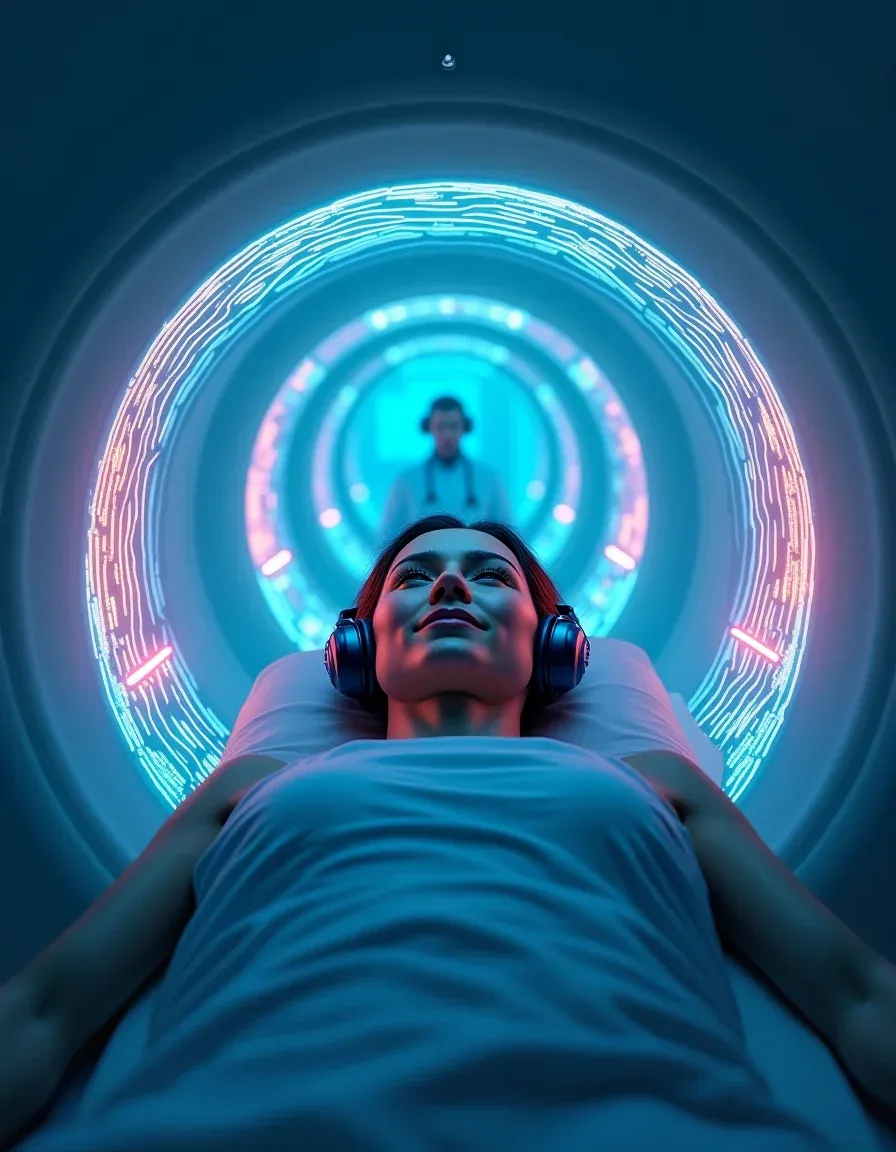Why are MRIs so tight and so loud? Here's the simple explanation
Hear the knocks and hate the squeeze? MRIs are loud because gradient coils vibrate in strong magnetic fields and tight by design for image quality. Read quick tips to cut noise, ease claustrophobia, and survive your scan.

The question
Why does an MRI feel like someone slid you into a metal tube and turned on a drumline? Why’s it so noisy and so snug—and is there anything you can do about it?
What's making that racket?
Short answer: fast-changing magnetic fields make the machine vibrate. Those gradient coils inside the scanner switch on and off in quick bursts. When large currents run through those coils inside a strong magnetic field, they feel forces (called Lorentz forces). The coils physically vibrate. That vibration is the loud knocking, banging and beeping you hear.
Some of the noise can also come from the cooling and vacuum systems (cryopumps) and from old electronics. Some people even prefer to skip the music so they can hear how the machine behaves—it's that interesting to some.
For more detail, the Wikipedia page on magnetic resonance imaging has a good overview: https://en.wikipedia.org/wiki/Magnetic_resonance_imaging.
Why so tight?
MRI needs very strong, very uniform magnetic fields and precise gradients to make sharp images. The magnetic field strength and the gradients fall off with distance, so having you close to the coils helps get better signal and finer detail. That’s why most scanners have a narrow bore.
There are wider-bore and open MRI designs, but they usually trade some image quality or require longer scan times. Newer machines and better electronics have made scans faster and more comfortable than older ones, though—some modern brain scans can take 10 minutes instead of 50.
Practical tips so it feels less awful
- Ask for earplugs and noise-cancelling headphones—these cut the bangs a lot and most clinics offer them.
- Many places play music through built-in headphones. Pick something calming or loud enough to mask the knocks.
- If you hate small spaces, ask about a wide-bore or open MRI. They’re not always available, but they help people with claustrophobia.
- Talk to the tech: they can give breaks, tell you how long each sequence lasts, and keep you in contact during the scan.
- For severe anxiety, ask your doctor about a mild sedative or about having someone in the room (when safe and allowed).
- Try a mock scan or breathing exercises before your appointment. Knowing the pattern of noises and how long each block lasts can calm you down.
Bottom line
It’s not personal—the MRI is loud and snug because of the physics and engineering needed to create brilliant images of the inside of your body. But clinics know this, and there are lots of comfort tricks: ear protection, music, wide-bore machines, and staff help. If you're nervous, ask—there’s almost always a way to make it easier.
Got a scan coming up? Bring a friend, wear comfy clothes without metal, and pick a playlist that makes you smile.




